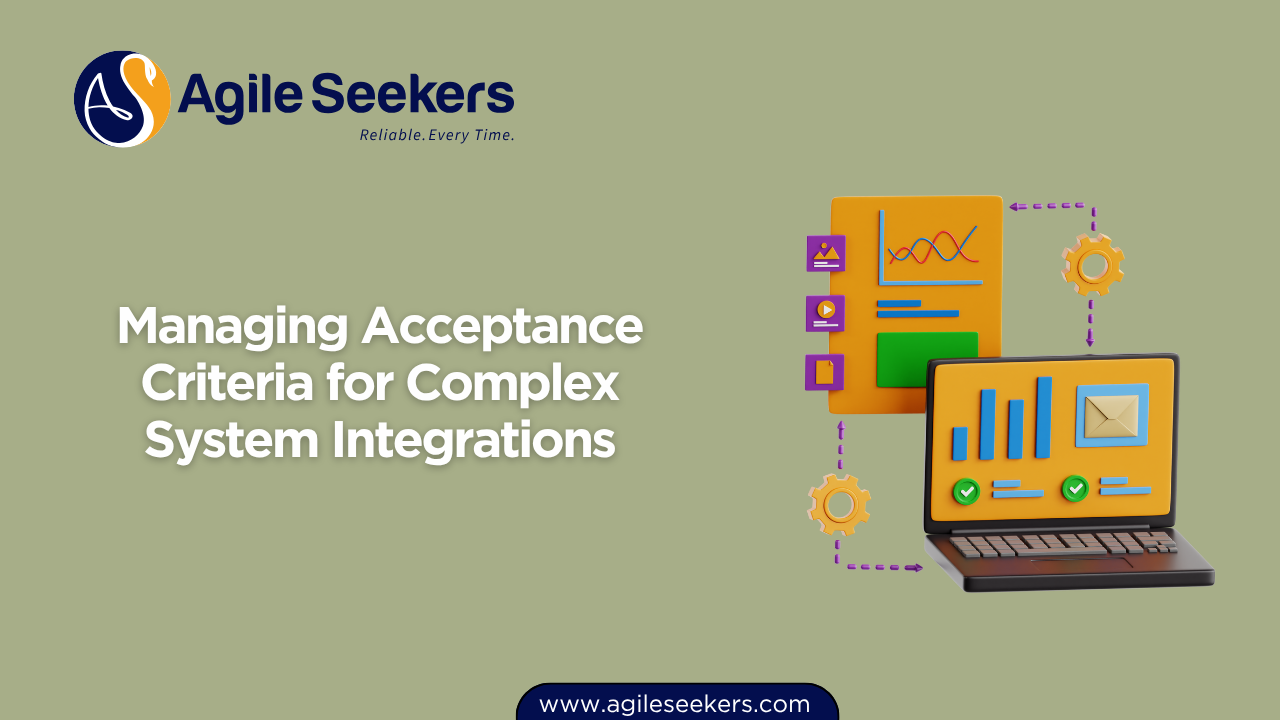Managing Acceptance Criteria for Complex System Integrations

System integration projects often involve multiple teams, legacy systems, APIs, third-party vendors, and cross-domain dependencies. Without well-defined acceptance criteria, these complexities turn into confusion, rework, and misalignment. Whether you're working on enterprise-level ERPs or multi-platform solutions, clarity around what 'done' looks like is non-negotiable.
This article explores how to effectively manage acceptance criteria in complex integrations, covering stakeholder alignment, technical precision, traceability, and practical techniques to avoid scope gaps.
Why Acceptance Criteria Matter in System Integrations
Acceptance criteria define the conditions a software product must meet to be accepted by users or stakeholders. In integrations, these criteria go beyond functional outcomes; they address contract validation, performance under load, data integrity, API handshake agreements, security expectations, and even legacy system constraints.
For example, a middleware service that connects a new CRM to an existing ERP must not only transfer data accurately but also respond within a specific time window, handle retries gracefully, and meet compliance rules. Without clear acceptance criteria, teams make assumptions, leading to failed integrations or rework during user acceptance testing (UAT).
Aligning Stakeholders Early
System integration projects require consensus across multiple stakeholder groups. Business users, security teams, IT operations, vendor managers, and developers all see the system differently.
Early workshops—such as story mapping or joint backlog refinement—help clarify what success looks like from each perspective. Product Managers or Business Analysts should drive these sessions to:
-
Elicit scenarios, edge cases, and interface expectations
-
Translate business needs into system behaviors
-
Negotiate across conflicting interests (e.g., speed vs. security)
This level of facilitation is a core skill for professionals who hold a SAFe POPM Certification, where product thinking and stakeholder collaboration are critical.
Structuring Acceptance Criteria for Integration Stories
Use the Gherkin format (Given–When–Then) to express criteria in a structured, readable way. This pattern suits integration scenarios where preconditions, actions, and outcomes must be explicitly defined.
Example:
Given the inventory system has a product listed
When a user adds that product to the cart in the eCommerce frontend
Then the system should confirm stock availability within 2 seconds
Make sure your criteria include:
-
Data Contract Validations: Is the format and structure of incoming/outgoing data correct?
-
Authentication Flows: Are token lifecycles and handoffs handled?
-
Performance Benchmarks: How fast should the integration respond under load?
-
Fallback Behavior: What happens when the downstream system is down?
Dealing with Dependencies
Complex integrations involve chained dependencies. If one service fails, others may be impacted. Include cross-system interactions in your criteria:
-
Sequencing: Define which system initiates, responds, and logs the transaction
-
Timeouts: Specify maximum wait times before triggering retries or fallbacks
-
Atomicity: State if partial failure is acceptable, or if rollback is needed
These help developers and testers understand the flow end-to-end. Dependencies also require clear interface contracts, often managed through API specifications or Swagger/OpenAPI documentation.
Making Criteria Testable and Observable
Acceptance criteria should be measurable. Avoid vague terms like "should work" or "should load quickly."
Instead:
-
Use exact thresholds (e.g., "responds within 3 seconds under 100 concurrent users")
-
Define expected error codes for failure scenarios
-
Link criteria to monitoring dashboards (e.g., "metric X must stay above Y during integration test")
Teams trained through PMP certification training understand how testable outcomes tie directly to quality gates and milestone decisions.
Tracing Criteria to Requirements and Tests
Maintain traceability from high-level requirements to user stories, acceptance criteria, test cases, and test results. Use tools like Jira, Azure DevOps, or TestRail to connect these artifacts.
Benefits of traceability:
-
Helps identify coverage gaps
-
Eases impact analysis for change requests
-
Supports regulatory audits (especially in healthcare, finance, etc.)
Projects following the Project Management Professional certification framework emphasize the value of documented traceability in ensuring deliverables meet stakeholder needs.
Revisiting Criteria as Integration Matures
As systems evolve, integration behaviors change. The criteria must evolve too. Regularly revisit acceptance criteria:
-
During sprint reviews
-
After UAT feedback
-
Post-deployment monitoring reviews
This is especially important in agile environments where release trains and microservice updates occur frequently. SAFe Product Owner/Manager certification practitioners are trained to manage such change using agile backlogs and iteration planning.
Common Pitfalls to Avoid
-
Vague Criteria: "System should sync data correctly"—what does "correctly" mean?
-
Missing Negative Scenarios: Only testing happy paths leaves gaps
-
Ignoring Non-Functional Needs: Performance, security, and compliance must be specified
-
One-size-fits-all: Reusing generic criteria across integrations doesn’t work
-
Lack of Ownership: Nobody updates criteria after change requests
Final Thoughts
Acceptance criteria are not just checklists—they are a communication bridge between business and tech. Especially in complex integrations, they define what matters, where the risks lie, and how quality will be judged.
Treat them as living documentation. Collaborate on them, make them precise, and validate them often.
For those looking to level up their ability to manage such complexity, explore the PMP training path or the SAFe POPM training. These certifications go deep into aligning business outcomes with technical delivery—a skill that's non-negotiable in complex system integrations.
Also, check out Thoughtworks' perspective on testable requirements to explore further practices for acceptance clarity.
Also read - Collaborating with DevOps to Streamline Deployment Pipelines
Also see - Using Architecture Decision Records (ADRs) in Product Development




















